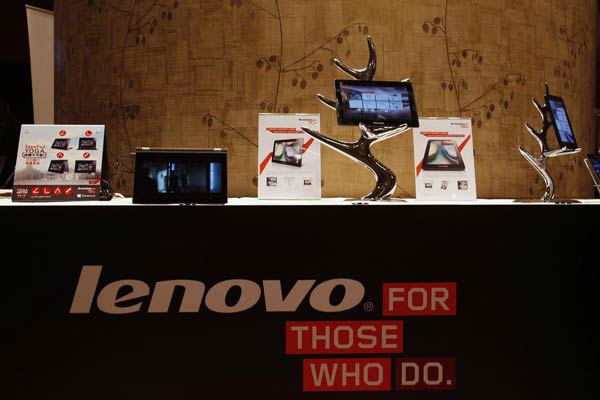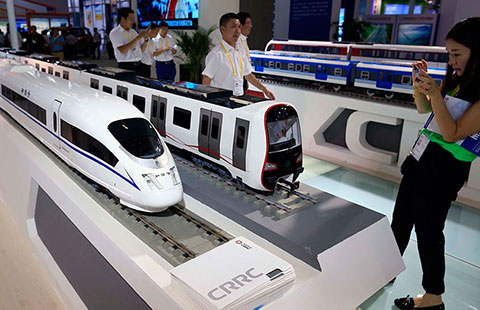Lenovo plans to launch cheapest 4G smartphone in Indian market
By Liu Zheng (chinadaily.com.cn) Updated: 2015-08-17 13:02
 |
|
Lenovo tablets and mobile phones are displayed during a news conference on the company's annual results in Hong Kong in this May 23, 2013 [Photo/Agencies] |
After posting a decline in net profit in the first financial quarter ending June 30, tech giant Lenovo is reportedly planning to strengthen its Indian market by launching the cheapest 4G smartphone in the country.
The A2010, the cheapest smartphone in Lenovo's portfolio with 4G connectivity, was launched with a 1,690 Vietnamese Dong price tag in Vietnam earlier this month, and the company is likely to launch the same device in India soon, according The Times of India.
Lenovo A2010, one of the cheapest smartphones running Android Lollipop, is powered by Mediatek MT6735 -- a 64-bit quad core processor that has integrated 4G LTE World Mode so it will support and work on all 4G bands in India.
The phone features a 4.5-inch display with a resolution of 854*480p and has dual-SIM slots. Other hardware specifications include 1GB RAM, 8GB storage and a 2,000mAh battery.
There is a 5MP primary camera (with LED flash), 2MP front facing camera and micro SD slot for expansion (up to 32GB card supported). For connectivity, you get 4G, WiFi and Bluetooth 4.0.
According to technology research firm IDC, Lenovo holds 6 percent market share in the rapidly growing smartphone market in India. The company has seen strong sales volume on the back of its 4G enabled smartphones such as A6000+, A7000, K3 Note and the Motorola range of 4G supported smartphones.
The existing cheapest 4G smartphone available in India is the Phicomm Energy 653 priced at Rs 4,999 (500 yuan). "Lenovo's budget 4G smartphone will be cheaper than the Phicomm smartphone," said The Times of India.
Lenovo's revenue increased by 3 percent to $10.7 billion, profit before tax went down 80 percent to $52 million and net profit fell to $102 million from $211 million from previous year.
To reduce cost and improve profitability, the company announced on August 13 that it will cut 5 percent of its non-manufacturing jobs or 3,200 jobs globally.
- 2015 China International Fair for Investment and Trade kicks off in Xiamen
- China's commodity imports robust in Jan-Aug period
- China stocks rebound 2.92%
- 2015 China box office already past 2014 total
- China foreign trade decline widens in August
- Interview: JP Morgan's senior executive bullish on China
- Innovation, development the focus for NZ mayors
- Lives of freelancers

















